Yesterday morning we encountered several cooperative Greater Yellowlegs at Farmington Bay and this one found a rather unusual prey item.
I watched this bird feed for some time. Most of its food items were quite small, presumably a variety of invertebrates, but suddenly…
its bill emerged with a writhing, squirming mud-covered prey item. At first I guessed that it might be some type of worm.
Almost immediately the bird released the prey and watched it intently just under the surface…
If you’ve noticed that the ripples in the water never extend far behind the bird in these images, it’s because there’s an extremely thin layer of ice just behind the yellowlegs.
and then retrieved it again. This process was repeated several times. I’m convinced it was a deliberate attempt at washing off the mud before consuming the prey.
Now I could see the prey more clearly and I’m quite sure it was a weather loach (alternately called dojo loach), an invasive fish. In other images I could see its fins and fish tail.
These East Asia natives (there are several species) are popular aquarium fish that are occasionally released into fresh water lakes and ponds where they sometimes thrive. They have the ability to detect barometric pressure changes which they react to frantically by swimming erratically and standing on end on the substrate – thus the name “weather loach”. Unlike most fish, these loaches burrow in the substrate at the bottom of ponds and aquaria which explains the initial muddy condition of this fish.
Once again the bird momentarily released the fish..
and then quickly retrieved and swallowed it.
When the bird turned around I could see the loach moving and squirming as it went down the crop.
As far as I know it was little ol’ me who first discovered the presence of weather loaches in the Farmington Bay ponds. In December of 2007 I photographed this Common Goldeneye with a fish I didn’t recognize. I did some research on native fish in the area but couldn’t match any of them with this one.
Then four months later I photographed this Snowy Egret with what appeared to be the same kind of fish. By now my curiosity was really piqued so I began to ask around. I showed these photos to my good friend Justina Bernstein who at the time was Director of Education at the Great Salt Lake Nature Center and she sent them to a fish specialist at DNR who keyed out the fish and identified them as weather loaches. Thanks, Justina!
Later I asked one of the DNR employees at Farmington what species of fish were known to exist in the Farmington aquatic system and he rattled off several species but his list didn’t include loaches. When I asked him about them specifically he said he’d never heard of them.
To my knowledge no one has ever studied the potential impact of this invasive species in Utah.
Maybe it’s time…
Ron


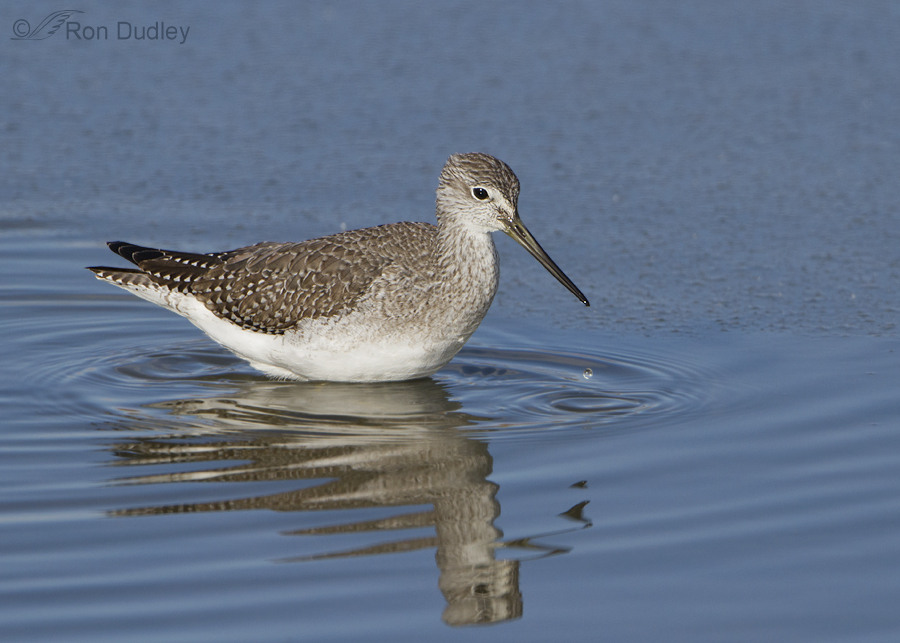
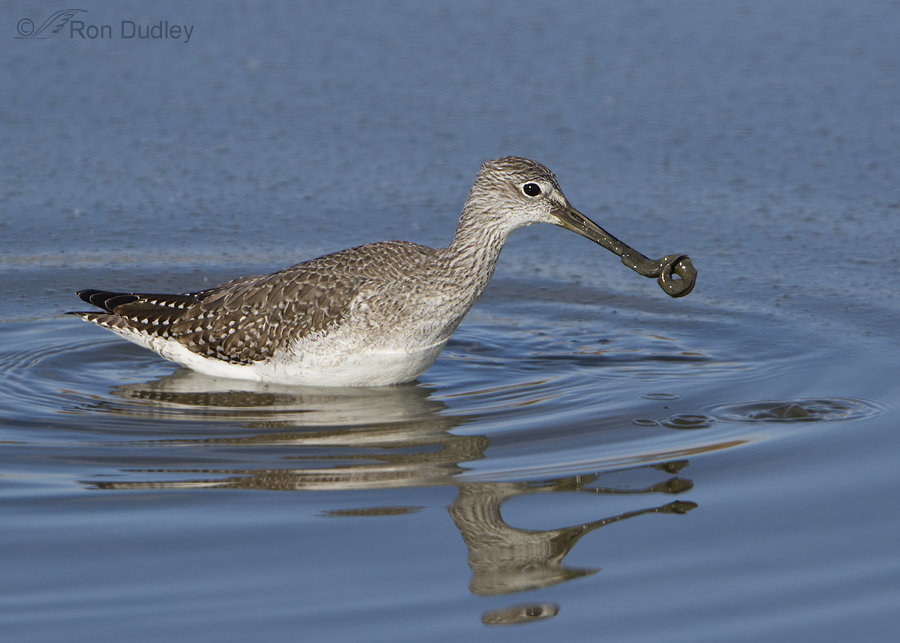
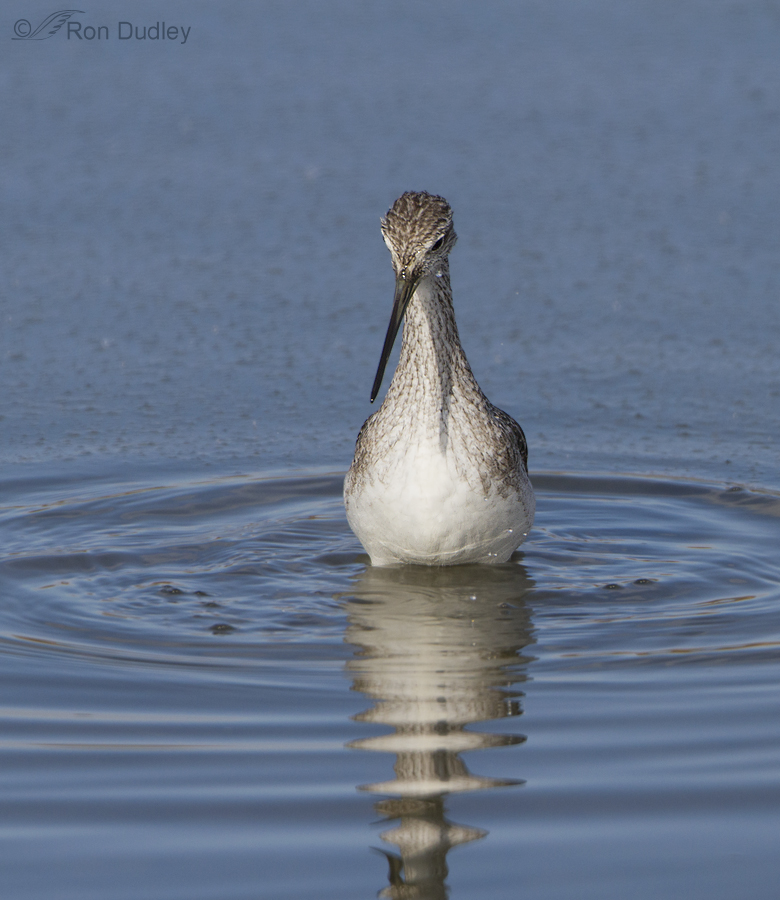
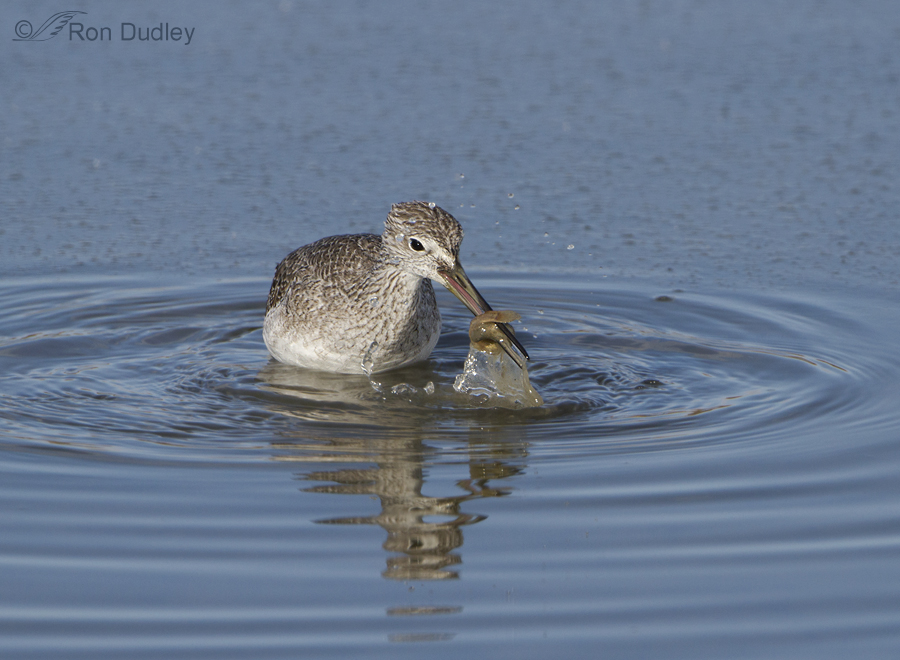
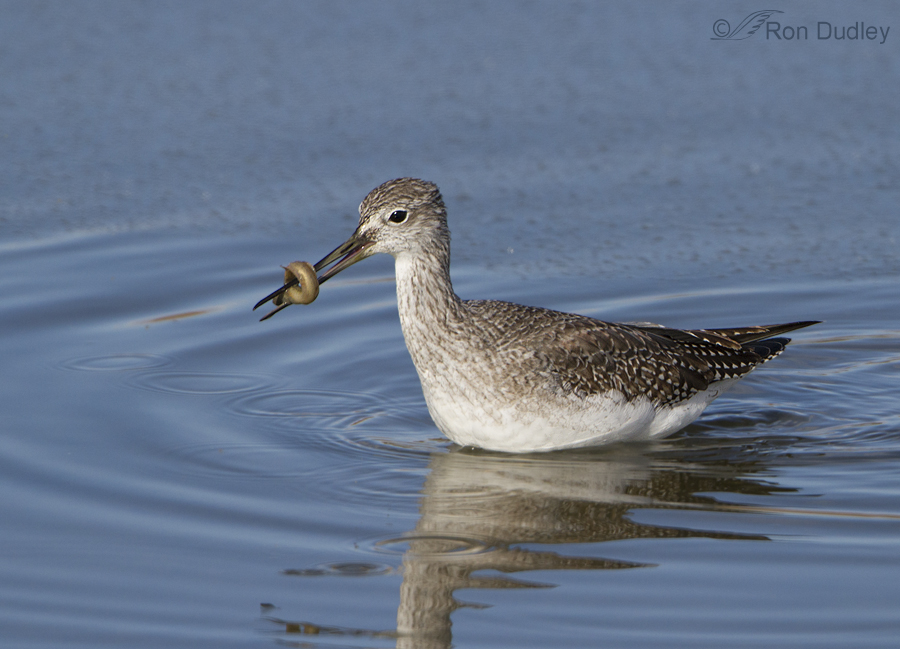
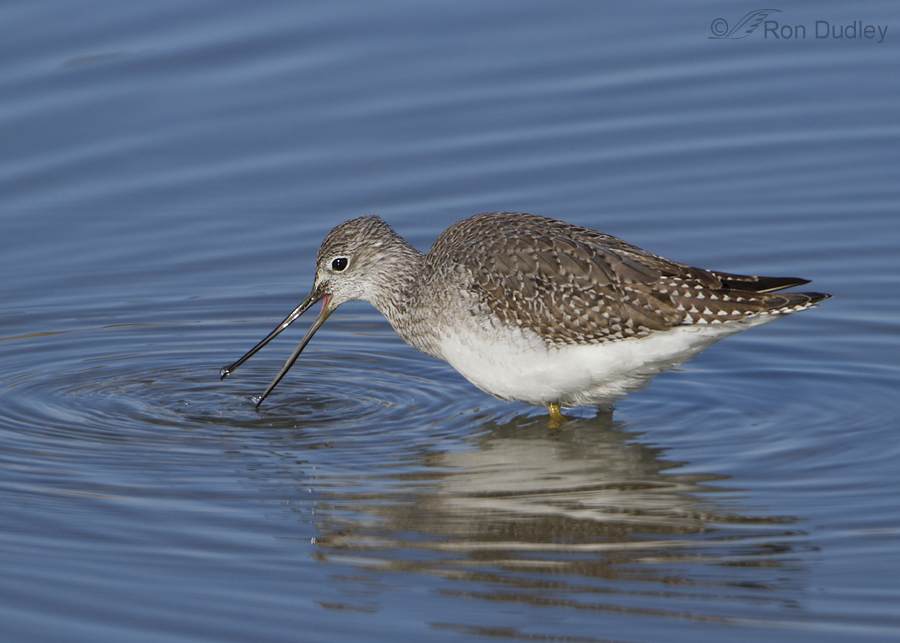
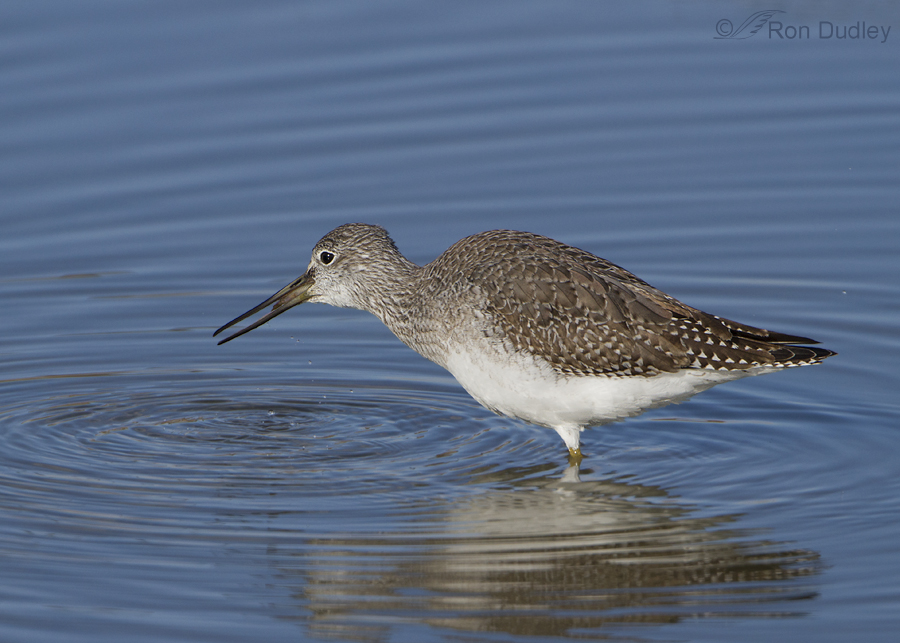
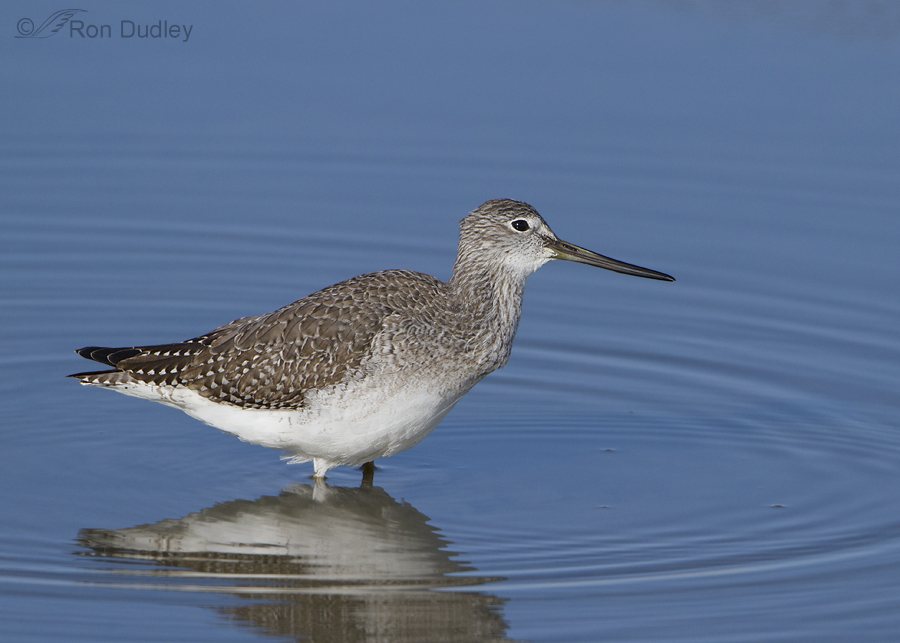

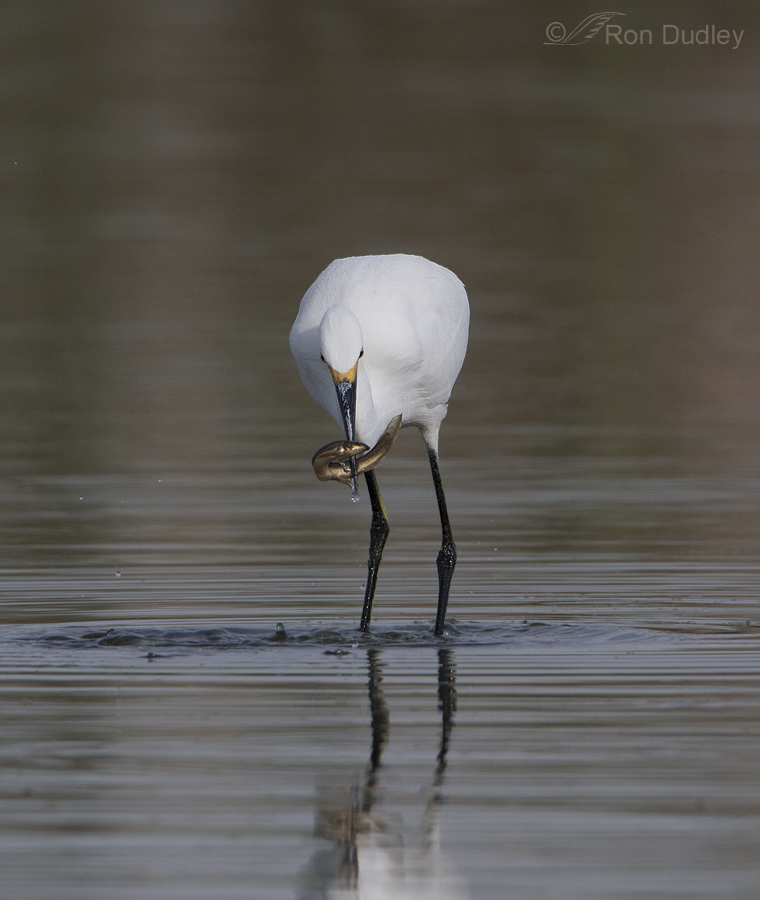
Ron–is that a turtle shell behind the golden eye? If so, what kind? Was it still inhabited?
No, it isn’t, Patty. It’s just a rock.
I love this series of photos. Interesting bird behavior is so fascinating to me. I think it’s so great that the bird wanted to eat a clean fish! And I must say, such an ugly little fish! I can’t imagine why anyone would want them in their aquariums, except of course for their own interesting behavior. I’ve never heard of a loach in my life, thank you for yet another new learning experience.
You have make beautiful photos, Ron!
Greetings, RW & SK
Great shots, Ron! Always amazing.
Thanks, Rosemary.
Another interesting post for a variety of reasons and amazing to see the Yellowlegs with that icy film in the background – they must one of the tougher shorebirds!
I’m glad you made note of the ice, Sonja. I was watching through my lens as the ripples from the bird hit it. It was so very thin that the ice would actually bend with the tiny waves.
That’s incredible – the bending bit I mean!
My partner has fish tanks and we have had loaches in the past – though never a weather loach. Fascinating. And hiss and spit to anyone who essentially throws out an animal to ‘sink or swim’. Not only the animal/fish/bird, but other species too.
Thanks Ron. As always, the images and the commentary are an education and a delight.
Elephant’s Child, I’ve often wondered if the problem doesn’t often look like this – parent no longer wants the fish, their kids love the fish and don’t want them to die or be flushed down the toilet, so parent sooths kids telling them the fish will be happier in a lake or pond so that’s what they do. Probably make a family outing of the release. So now we have another generation that will do the same thing, ad infinitim…
Ron–I thought your reply to Elephant’s Child (I love that name) was interesting…the one about the parent talking the child into releasing the unwanted pet into the wild….I had four children and often thought about releasing them into the wild…or, better yet, releasing myself into it. This was after I had tried aiming the remote at them and clicking “off” didn’t work…This is how we mothers get sometimes…and I’ll bet dollars to donuts that fathers do, too.
Wow! You got quite a catch there! I’m curious about the loaches. They don’t seem to be very appealing aquarium fish, but then I am not really a fish-a-nado. Sorry, I couldn’t resist. Thanks for the great info and beautiful images.
Tana, I think a big part of the appeal for weather loaches is their bizarre behavior when the weather (barometric pressure) changes.
I used to keep aquarium fish but I’d much rather have a dog. Or a snake. Or a tarantula (all of which I used to keep when I was teaching biology and zoology).
Hi Ron,
My favorite TV show is Jeopardy!. Like many fans, I play along at home, and your posts are supplying me with a huge inventory of potential reponses! Now, if I could just get Alex Trebek to use the right categories…
Great images, and thanks for another natural history lesson.
Cheers,
Dick
Loved your comment, Dick. Alex never uses the categories I’d prefer either. Same thing would happen when I used to play Trivial Pursuits…
I’ve never heard of these fish…they almost look like eels. Never heard of any pet store, pet department, aquarium, or aquarium supply place advising buyers not to release unwanted fish into the wild… ever. Why don’t they? Maybe they could make arrangements to take fish back when their owners are “tired’ of them…a minimal amount of brain power should be able to find some better resolution.
Patty, I’ve often wondered if ethical pet stores shouldn’t have signs posted warning customers of the potential problems when fish are released.
As usual both incredible shots and commentary! You are such a jewel. Without you, they might not have made this discovery! What a blessing you are to the natural world!
Charlotte
Aw shucks, Charlotte. I’m blushing. Thank you very much but even though I may have been the first to document these fish at Farmington it was already known that they were in at least a few other Utah waterways.
Such an interesting nature lesson. That fish looks more like a small snake to me. People are crazy releasing their used to be pets into the wild. Nice photo lesson. thanks Ron
Thank you, Ellen.
I am familiar with weather loaches as aquarium fish, in much smaller sizes. I also don’t understand why someone would release them…..
Leisa, many fish kept in aquaria don’t get as large as they do when unconfined. Perhaps that’s the case here.
Interesting behavior to see the Yellowlegs cleaning his meal before consuming it. Invasive species (flora and fauna) are at epidemic levels in some areas and control efforts are having minimal effect in many cases. I think education of the public may help a little, but, unfortunately, much of the public simply doesn’t care enough about the future to take any action.
I can’t argue with you Wally, education likely won’t solve the problem but every little bit helps. I hope…
It seems a few reports are out there calling them “rare, but increasing” when talking of the Utah populations. The primary name used is Oriental Weatherfish. There are a large number of exotic fish in Utah(25), while only what looks like eleven native species. The Oriental Weatherfish is a problem for Trout mostly, eating water insects and increasing nitrogen levels. They were introduced by aquarium farms by accidental release and as bait.
All I can say Ron is, “good eye”! I would have just thought it a little minnow(true minnow or cyprinidae) lol.
~Tim
Thank you, Tim. There’s a long list of common names for the several species of these loaches. I chose to use the one used by the ichthyologist who identified them or me. As per usual, common names can be very confusing…
So, right now, is it safe to say this loach in current numbers isn’t causing serious problems? Is predation by birds like these enough to keep the populations low? And … finally, poor loaches. They obviously didn’t ask for this by ignorant and careless aquaria keepers. Great work, Ron.
WOW!! These images are a fantastic reason why I love your blog, your images and info that you always provide. Wonderful record and story of what was going on at that time and place. Many thanks for cluing in a fellow from the east coast!!
Congratulations of being the first to document this invasive species. It shows how necessary photography is in maintaining a record of changes in our environment and history. Well done!!
Thanks very much, Dick. I don’t know for a fact that I was the first to document these fish at Farmington but as far as I know that’s the case.
Neat stuff Ron. I have never figured out why people release strange fish into places they don’t belong. What is the attraction, what do they gain? I fished a pond outside of town here this year & someone had dumped some Blue Gill in there & you could literally just net theme out of the water there were so many! I just don’t get it.
I don’t get it either, Deb. Perhaps in some cases it’s a combination of ignorance and a misguided effort to avoid killing aquarium fish that they’re still fond of but no longer want.